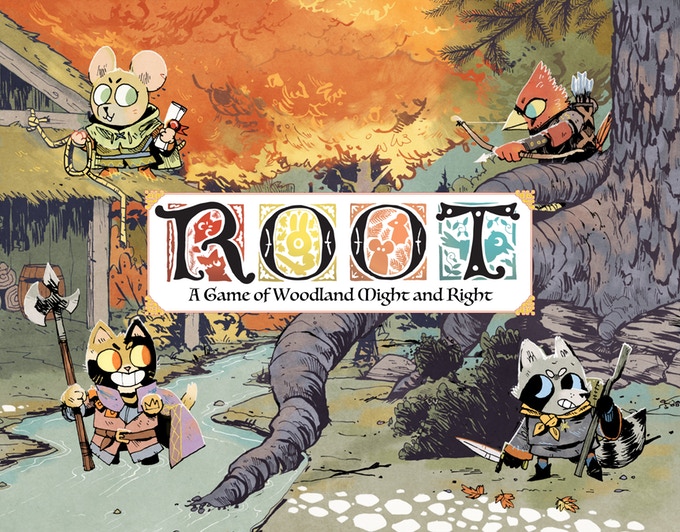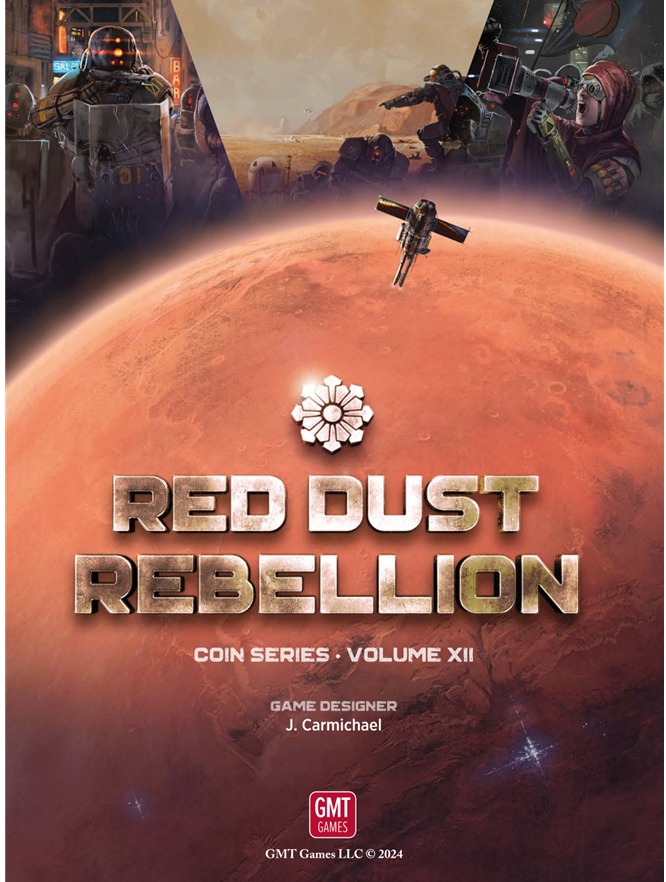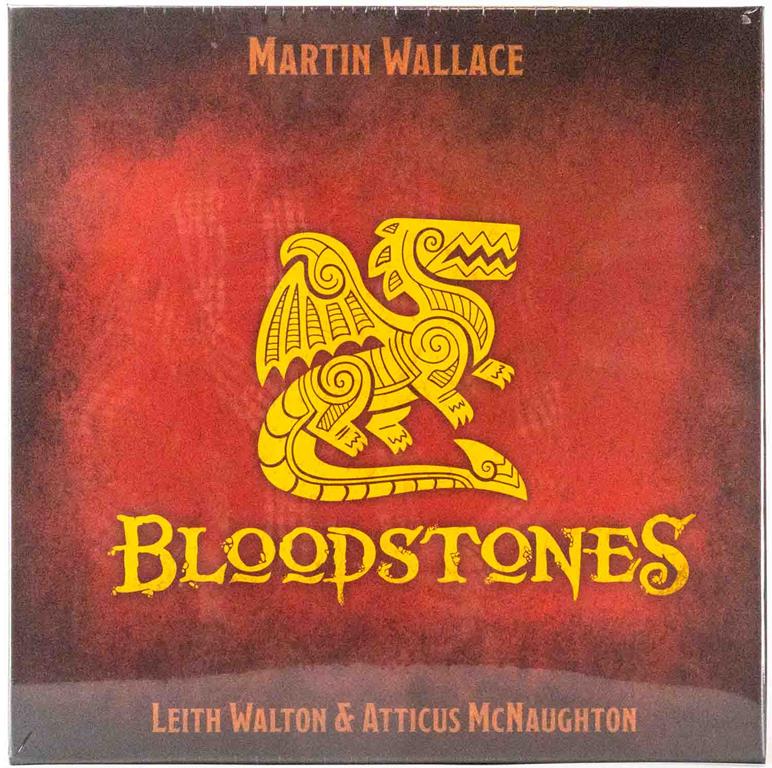Since it was released in 2018, Root has taken hold of a particular genre: area control with wildly different factions. If you’ve played with its too-cute-creatures engaged in brutal battles or sneaky subterfuge, you get that half the fun is figuring out how your faction works, and how best to counter the other players’ equally oddball forces. It’s a great mix, perfect to play again and again.
equally oddball forces. It’s a great mix, perfect to play again and again.
But Root’s far from the only board game in recent years to put a spin on this, so read on to find different settings, styles, and adventure in asymmetric area control.
You know, like Mars.
The Sci-Fi COIN Finally Arrives
Long a legend on GMT’s P500 list, Red Dust Rebellion (Jarrod Carmichael) brings the COIN (COunter INsurgency) system to a sci-fi setting. COIN games generally take varied factions with their own unique victory conditions and mash them together on a map, in much the same way Root does. Most prior COINs, from Fire in the Lake to Andean Abyss have their bases in historical conflict, and their appeal, in part, comes from seeing how these disparate factions scrabble to get the upper hand.
Red Dust Rebellion ditches history for a possible future. You’ll zip ahead to the year 2250, roughly 200 years after the first humans set foot on Mars with  intent to stay, and things are . . . turbulent. You and your pals will choose between four factions, including the Mars government, the corporations (gotta have those), the Red Dust Movement, which wants to let Mars be Mars, and, naturally, a religious faction hellbent on converting the planet. Each faction will deploy their own unique units and abilities in their drive to achieve their individual objectives.
intent to stay, and things are . . . turbulent. You and your pals will choose between four factions, including the Mars government, the corporations (gotta have those), the Red Dust Movement, which wants to let Mars be Mars, and, naturally, a religious faction hellbent on converting the planet. Each faction will deploy their own unique units and abilities in their drive to achieve their individual objectives.
Like many COIN games, Red Dust Rebellion is card-driven at its core, though it adds plenty of wrinkles to the familiar formula. Flashpoints create interruption opportunities in the normal turn order, sandstorms (always a Mars staple) blitz around the map causing havoc, and faction asymmetry, particularly with the Church of the Reclaimer, adds in deep, different mechanisms. All of this is packaged in a strong GMT production, with great artwork, wooden components, and a mounted board. It’s a showpiece on the table, though you’ll want to make sure your group is ready to go beyond the gloss.
Root is far from a light game and Red Dust Rebellion beats it in complexity . While you won’t be contending with fresh factions in every game (a confusing constant if you’re invested in Root’s many expansions), Red Dust Rebellion presents a broad swath of options. Knowing when and where to use your limited resources, when you need to block an opposing faction or ally with another are lessons learned with repeat plays. Good thing, then, that Red Dust Rebellion is a blast to play through, even if you’re not always sure what you’re doing. You’ll always be in each other’s business, harassing, begging, and battling.
If your table is full of Root veterans, or if you’ve played other COIN games, Red Dust Rebellion is worth a sci-fi shot. If you’re newer to heavier titles, or haven’t tackled a COIN, then check out some of the other games in this article first to get your feet wet.
Hexes and Havoc, with Euro Stylings
If your group is hews closer to the Euro gaming spectrum, you might fear venturing into the clash-heavy world of Root and its area control analogs. Rather than taking a jump into the fray, why not wade into the shallow end with Dwellings of Eldervale or its sci-fi pseudo-sequel, Andromeda’s Edge (Luke Laurie, Maximus Laurie)? These are big, bold productions that leverage light asymmetry and worker placement to drive their area control, meaning you can leverage your Euro experience in ways other games in this genre won’t allow.
At the start, you’ll pick your ridiculous faction, take your workers, draw a couple of point-generating quests, and stare down a hex collection full of bonuses to battle over. There’ll be monsters (or alien forces) to battle against, unique skills to develop, and a tableau to build that activates when you recall your workers. As your workers brush up against other players, you’ll have the opportunity to smack each other around (or panic as those monsters march through the board obliterating everyone’s forces in turn). Combat’s a simple dice chuck and done, with defeated units often providing some value beyond the grave.
to battle over. There’ll be monsters (or alien forces) to battle against, unique skills to develop, and a tableau to build that activates when you recall your workers. As your workers brush up against other players, you’ll have the opportunity to smack each other around (or panic as those monsters march through the board obliterating everyone’s forces in turn). Combat’s a simple dice chuck and done, with defeated units often providing some value beyond the grave.
Your various achievements will see you completing those quests, climbing tracks to score points (elements in Eldervale, sci-fi shenanigans in Andromeda’s Edge), and the endgame will see points pour in from all over the place in a finish that’s often surprising. See, there’s enough chaos and moving parts in these big games to keep them from being too mathy, with in-game stories cropping up from heroic defenses, wild swings at strong enemies, and key card draws.
Andromeda’s Edge tightens up the gameplay, and the combat in particular, from Dwellings of Eldervale, though the additions add some complexity, so while both offer asymmetric, euro-style area control, you’ll be best served by sticking with the theme (fantasy or sci-fi) that best appeals to your group. Both are on par with Root in their rules, though the lighter asymmetry means you won’t be wondering how your buddy over there is going to win the game. And, you’ll know just how to stop them: drop in your worker-warriors and let’em wreak havoc.
Martin Wallace Wages War
Martin Wallace is probably best known for Brass, a fantastic and relatively cutthroat euro that does, in its way, include area control (locking your opponents out of coal is a distinct pleasure). Bloodstones leaves behind that industrial landscape for a fantasy one, pitting up to six asymmetric factions against one another in a race to score the most victory points. So far, so usual, but Bloodstones tweaks the formula in one particular way:
The domino-like tokens.
These nifty pieces represent both your units and your resources, and you’ll be drawing a whole bunch of them every round. They’re unique to your faction,  and deciding how to spend, or spawn, them is the central choice of the game. Most actions, like moving, in Bloodstones require spending those tiles, so the bigger your force, the more cash you’ll have to burn getting them across the map. Given a fixed income (six tiles per turn), angling for cheap ways to score or outmaneuver a sluggish opponent is key.
and deciding how to spend, or spawn, them is the central choice of the game. Most actions, like moving, in Bloodstones require spending those tiles, so the bigger your force, the more cash you’ll have to burn getting them across the map. Given a fixed income (six tiles per turn), angling for cheap ways to score or outmaneuver a sluggish opponent is key.
Points come in various ways, whether from winning battles, burning enemy villages, or defending your own. You might even find it better, score wise, to abandon territory in favor of torching other spots. Should you get into a battle, you’ll both tally up your tiles and abilities, then draw bonus chips from a separate bag (essentially operating like a dice roll). The bigger number comes out on top, giving opportunity for luck to play its part.
Compared to Root, Bloodstones slims down the complexity. You’re all essentially scoring in the same ways, and the round-to-round play is easier to parse from one player to the next. Bloodstones does share Root’s impeccable table presence, with those chunky tiles an easy draw that, when coupled with a friendlier ruleset, makes Bloodstones a good bet to get to the table with groups newer to area control. With a bunch of newbies, your first games might run a few hours, but playtime slims down fast once you’re rolling, with little in the way between the next clash.
And that, after all, is the point.
The Preferred Area Control of Elder Gods
Any piece about asymmetric area control board games would be missing something without a mention of the mad explosion that is Cthulhu Wars (Sandy Petersen, Lincoln Petersen). A product of crowdfunding freedom and demanding elder gods, Cthulhu Wars demands you throw sanity to the wind and engage in fast, global annihilation. Game-breaking abilities emerge every turn as your factions throw their eldritch horrors at one another, or slink away from battle to warp the very fabric of time and space. Dice will be thrown in amounts not seen outside of Warhammer 40K. Miniatures usable as weapons in self-defense will flatten the board. You will advance the Ritual of Doom, and amid the mountain of boxes this game delivers, you will see it completed.
engage in fast, global annihilation. Game-breaking abilities emerge every turn as your factions throw their eldritch horrors at one another, or slink away from battle to warp the very fabric of time and space. Dice will be thrown in amounts not seen outside of Warhammer 40K. Miniatures usable as weapons in self-defense will flatten the board. You will advance the Ritual of Doom, and amid the mountain of boxes this game delivers, you will see it completed.
Cthulhu Wars is not tight, is not predictable, is not built on rigid bones. It is a hairy, wild thing, expensive and overwrought, uncaring about practical considerations like storage or table space. Should you have enough time and desire, you can play up to eight players or trade Earth for an interdimensional library. A statement piece, and its value to your collection will come in how often you get it to the table, as every time you do, you will tell a new, memorable story.
Delight in the Differences
Root might be the standard bearer for asymmetric area control games, but its foundation gives way to wide opportunity. Trading the cute critters for starships, fantasy warriors, or nightmare gods can smooth the learning curve or bring skeptics to the table. Folks looking for a simulation experience can leap from Root into the COIN series, where varied objectives and play styles nudge up against realism to build tight gameplay. Andromeda’s Edge offers bait to euro gamers, a teasing invitation to a fresh genre.
And if chaos is what you seek, Cthulhu awaits.
Check out our latest article here!
